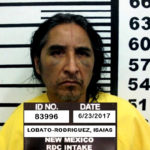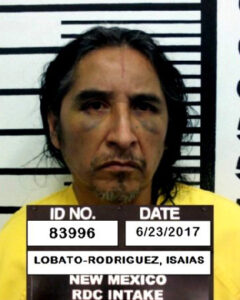• A jury found Isaias Lobato-Rodriguez guilty of second-degree murder for strangling Connie Lopez
• Judge Jarod Hofacket sentenced him to 15 years, the maximum in New Mexico
Read the case write-up catch up on the past stories
DEMING, N.M. — Isaias Lobato-Rodriguez is appealing his second-degree murder conviction on five grounds, including that holding the trial during a pandemic hampered the transcription of the trial, therefore eliminating his right to a fair trial.

A jury convicted Lobato-Rodriguez, 57, of the second-degree murder of Connie Lopez, 57, of Lake Placid, Fla., following a four-day trial that ended Aug. 20, 2020. They deliberated for just an hour. He was charged in district court with first-degree murder. District Judge Jarod Hofacket sentenced Lobato-Rodriguez to 15 years in prison, the maximum sentence for second-degree murder in New Mexico, during a hearing on Nov. 2, 2020.
On Nov. 10, 2020, Hofacket appointed the public defenders office to appeal Lobato-Rodriguez’s conviction, according to the docket. On Dec. 21, 2020, his attorney, George Harrison, filed a docketing statement with the court of appeals, contending that five issues in the case were grounds for a new trial:
- Conducting the trial while adhering to COVID-19 protocols resulted in “the inability to properly transcribe the proceedings,” obviating a fair trial
- Hofacket’s multiple denials of motions to suppress evidence
- Denial of a mistrial motion after prosecutor Matthew Bradburn commented on Lobato-Rodriguez’s silence after asserting his Fifth Amendment right to remain silent
- Hofacket’s “failure to correct critical errors” by the interpreter
- Hofacket’s denial of a self-defense jury instruction
Harrison previously motioned for a mistrial on three grounds, repeated in the appeal — the Fifth Amendment statement, the improper interpreting and the denials of motions to suppress. Hofacket denied that motion.
Harrison wrote in the docketing statement that he hired a certified Spanish interpreter to compile a “complete interpretation” of Lobato-Rodriguez’s testimony.
“The interpreter filed an affidavit with the district court,” Harrison wrote. “The affidavit states, among other things, that the quality of the audio recording of Mr. Lobato-Rodriguez’s testimony during trial is so poor that a proper interpretation would not be possible.”
Harrison wrote in the docketing statement and other motions that there was an improper translation, where Lobato-Rodriguez mumbled that he thought the victim told him he would “be dead that day.”
When Hofacket denied the motion, he wrote that the interaction Harrison said happened in fact, did not happen, and he did not understand why the interpreter claimed something happened that he found did not, after he reviewed the audio.
Harrison wrote that the rules for a jury trial during a pandemic meant the jurors were seated in the audience section of the courtroom, the family of the victim, Harrison and Lobato-Rodriguez were in the jury box, with their backs to the jury, and everyone was wearing masks.
Two Spanish interpreters translated during the trial for Lobato-Rodriguez and one juror.
“The COVID rules in effect made for great difficulty hearing potential jurors during voir dire and understanding witnesses called to the stand during trial testimony,” Harrison wrote.
No hearings have been set in the appeal and no responses have been filed by prosecutors.
The killing
On March 17, 2017, Isaias Lobato-Rodriguez, of Florida, allegedly tied a belt around Connie Lopez’s neck, strangling her in the front seat of her rented mini-van, two miles east of Hachita in Grant County, according to a statement of probable cause.
He allegedly told two Border Patrol agents, one of whom found Lopez’s body, that she was going to kill him and his family and that he was with other people in a berm in the desert. The agents could find neither footprints nor signs of anyone else.
According to Lobato-Rodriguez’s trial testimony, Lopez was driving him to his home in Mexico. Lobato-Rodriguez is a Mexican national.
For more details on the killing of Connie Lopez, see the case write-up or read the past stories.
Continue reading “Florida man appeals second-degree murder conviction on five grounds”


